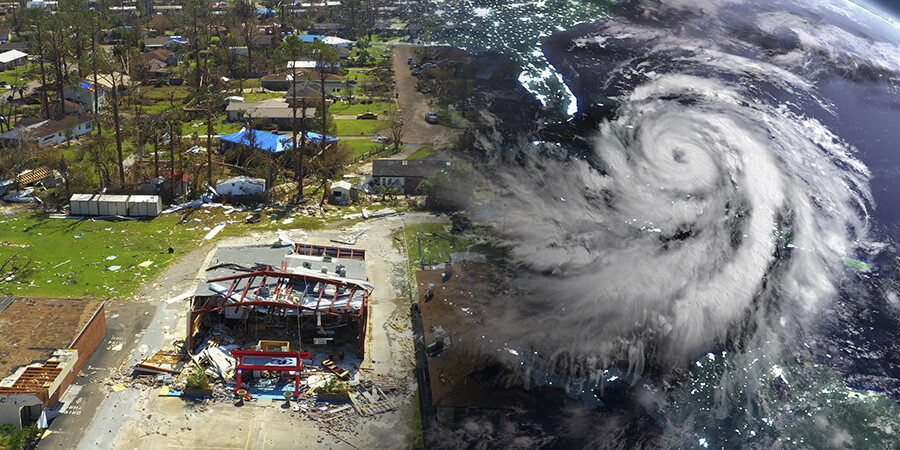3 min read
Above-Normal Hurricane Season: A Call to Action for the Insurance Industry
Admin May 30, 2024 3:01:45 PM

The National Oceanic and Atmospheric Administration (NOAA) has issued a stark and urgent warning: the 2024 Atlantic hurricane season is predicted to be above normal, with a heightened risk of major hurricanes. This forecast has immediate and significant implications for the insurance industry, particularly in the realm of risk management and climate preparedness.
The Forecast in Detail
NOAA predicts a 70% probability of 17-25 named storms, 8-13 hurricanes, and 4-7 major hurricanes (Category 3 or higher). This forecast is based on a confluence of factors, including record-warm sea surface temperatures, the potential shift from El Niño to La Niña, and reduced wind shear.
High sea surface temperatures (SSTs) and Oceanic Heat Content (OHC) are major factors influencing the 2024 hurricane season because they provide the energy and moisture that hurricanes need to form and intensify.
In 2024, record-breaking SSTs have been observed in many parts of the Atlantic and Gulf of Mexico. This, combined with high OHC, has created an environment conducive to the formation and intensification of hurricanes. The warmer the water and the higher the OHC, the greater the potential for the development of strong and long-lasting hurricanes.
Sea Surface Temperatures (SSTs):
- Energy Source: Warm SSTs (generally above 26°C or 79°F) provide the heat energy necessary for evaporation, which fuels hurricane development. The warmer the water, the more evaporation occurs, and the more energy is available for the storm to grow.
- Hurricane Intensity: High SSTs can lead to rapid intensification of hurricanes, where a storm's wind speeds increase significantly in a short period. This can make forecasting and preparing for hurricanes more challenging.

NOAA Sea Surface Temperatures (SSTs) from May 30, 2024, show extremely warm waters along the Intertropical Convergence Zone (ITCZ) and in the Gulf of Mexico
Oceanic Heat Content (OHC):
- Energy Reservoir: OHC refers to the amount of heat stored in the upper layers of the ocean. It represents a deeper energy source than just the surface temperature. Even if SSTs cool slightly, high OHC can sustain hurricane development and intensification.
- Hurricane Endurance: High OHC can allow hurricanes to maintain their strength or even intensify as they move over the ocean, even if they encounter cooler SSTs along their path. This can lead to prolonged periods of destructive winds and storm surge.

NOAA's Oceanic Heat Content (OHC) data for May 30, 2024, reveals elevated heat levels in the Gulf of Mexico and the Caribbean Sea.
Risk Management in the Face of Climate Change
The insurance industry is on the front lines of climate change. The increasing frequency and intensity of extreme weather events, such as hurricanes, drive up claims costs and challenge traditional risk models. To mitigate these risks, insurers must adopt a proactive risk management approach, incorporating the latest climate science into their underwriting and pricing decisions.
The Role of Insurtech
Insurtech, the convergence of insurance and technology, is pivotal in offering innovative solutions to these challenges. Advanced data analytics, artificial intelligence, and machine learning are not just tools but essential components that can help insurers better assess and price climate risks. For example, platforms like Opterrix use machine learning to predict catastrophe risk, enabling insurers to make more informed underwriting decisions.
A Call to Action
The above-normal hurricane season forecast is a wake-up call for the insurance industry. It is time to double down on risk management, leverage the power of insurtech, and accelerate the transition to a more sustainable future. By working together, we can build a more resilient industry that is prepared for the challenges of a changing climate.
Key Takeaways for the Insurance Industry
- Climate change is a reality: The increasing frequency and intensity of extreme weather events like major hurricanes underscore the urgent need for climate action.
- Risk management is paramount: Insurers need to adopt a proactive approach to risk management, incorporating the latest climate science into their decision-making processes.
- Insurtech is a game-changer: Insurtech solutions can help insurers better assess and price climate risks, improving their resilience and sustainability.
- Collaboration is key: The insurance industry, governments, and other stakeholders need to work together to mitigate the impacts of climate change.
Additional Insights
- The NOAA forecast is a reminder that climate change is not a distant threat, but a present reality. The insurance industry needs to adapt to this new reality to remain viable in the long term.
- Insurtech offers a range of innovative solutions that can help insurers better manage climate risks. These solutions can improve underwriting accuracy, streamline claims processing, and enhance customer engagement.
- The insurance industry has a crucial role to play in mitigating the impacts of climate change. By promoting sustainable practices and supporting climate-resilient infrastructure, insurers can contribute to a more sustainable future.
Looking Ahead
The 2024 Atlantic hurricane season is a stark reminder that climate change is a reality we must confront. But with the right risk management strategies and innovative insurtech solutions, we can navigate these challenges and build a more resilient future. Don't wait for disaster to strike – take action now.
Discover how Opterrix can empower you to proactvely prepare and respond to the challenges of hurricane season.
.png?width=800&height=161&name=Opterrix_Logo_White_TM%20(1).png)


